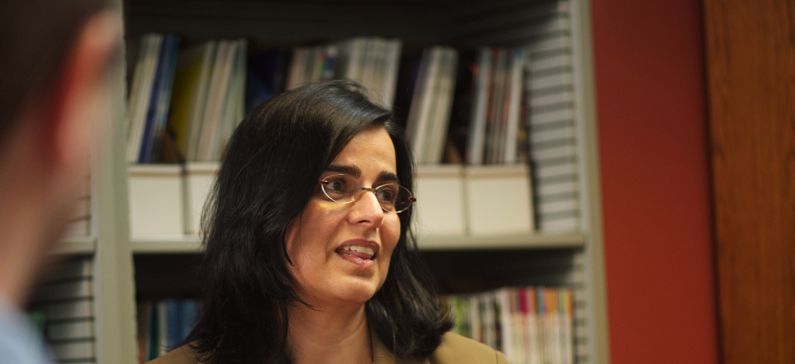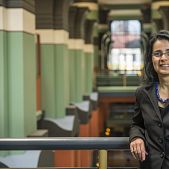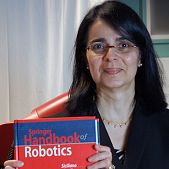
Prestigious honor for the Greek specialist in motion of the robots
Rice University computer scientist Lydia Kavraki has received one of the most prestigious honors in her field, the Association for Computing Machinery’s (ACM) Athena Lecturer Award.
Kavraki, the Noah Harding Professor of Computer Science and professor of bioengineering, was recognized for inventing randomized motion-planning algorithms in robotics and for the development of robotics-inspired methods for bioinformatics and biomedicine.
“I am deeply honored by this award,” said Kavraki, who joined Rice’s faculty in 1996. “It recognizes years of work done with my students and collaborators at Rice and around the globe. I am also delighted that ACM has chosen to name one of its top awards after Athena, the goddess of wisdom in ancient Greek mythology, who was a patron of human ingenuity and an astute adviser of heroes. It strikes a chord with me, as her picture was on the cover of my textbooks when I was growing up in Greece.”
Given annually since 2006, the Athena Lecturer Award celebrates women researchers who have made fundamental contributions to computer science. The award carries a cash prize of $25,000 and the honoree is invited to give a lecture at a major ACM conference of her choice that will be recorded for the association’s website.
“Planning the motion of objects in a three-dimensional space has been a central challenge in the robotics field for a long time,” said ACM President Vicki Hanson. “Lydia Kavraki’s Probabilistic Roadmap Method (PRM) has had a tremendous impact. It is now widely used in robotics applications in industry and is a foundational idea for numerous researchers in the field.”
Though the award recognizes Kavraki’s research, Hanson also lauded Kavraki’s mentorship of younger colleagues, especially women. “Her career exemplifies the award’s overarching goal of celebrating and supporting women in computing.”
Kavraki earned her master’s and doctoral degrees in computer science from Stanford and her bachelor’s from the University of Crete. In her 1996 doctoral dissertation, she proposed the Probabilistic Roadmap Method, a technique to plan the motion of robots, which had been an enduring challenge in the field. The method has since become a fundamental tenet of motion planning in most robotics textbooks. Kavraki has expanded her methodologies for robot motion planning over the years and inspired the robotics community to consider problems that were largely thought unattainable. In addition, the open-source Open Motion Planning Library that she helped create has now been used in more than 30 different robotics systems worldwide.
Kavraki also was the first to recognize that the motion-planning techniques she was developing in robotics could be applied to great effect in both biology and medicine. Her algorithms for analyzing the motion, shape and flexibility of molecules have impacted computational biology, drug discovery and drug design, and her more recent work on structural methods to identify cross-reactivity hot spots in T cells has the potential to introduce safer immunotherapy treatments for cancer patients.
Kavraki also is collaborating with NASA on leading-edge motion-planning technology for Robonaut 2, a humanoid robotic assistant the space agency is expected to deploy later this year at the International Space Station and also use on future space missions.
Kavraki is a member of the National Academy of Medicine and a fellow of the ACM and the Institute of Electrical and Electronics Engineers. Her numerous honors include the ACM’s Grace Murray Hopper Award, the Anita Borg ABIE Technical Leadership Award and Rice’s Presidential Award for Mentoring. MIT Technology Review has named Kavraki one of the World’s Top 100 Innovators, and she’s been chosen for Popular Science’s list of 10 Brilliant Scientists.
ACM is the world’s largest educational and scientific computing society. It unites computing educators, researchers and professionals to inspire dialogue, share resources and address the field’s challenges. It also promotes standards, recognizes technical excellence and strengthens the computing profession’s collective voice through strong leadership.










